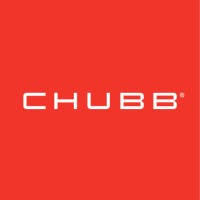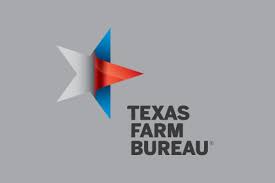Home Insurance Texas: A Comprehensive Guide
 As an experienced insurance agent, I’m here to guide you through the ins and outs of home insurance in Texas. Whether you’re a first-time homebuyer or a seasoned homeowner, understanding the intricacies of home insurance can be a bit like trying to learn a new language. But don’t worry, I’ve got you covered!
As an experienced insurance agent, I’m here to guide you through the ins and outs of home insurance in Texas. Whether you’re a first-time homebuyer or a seasoned homeowner, understanding the intricacies of home insurance can be a bit like trying to learn a new language. But don’t worry, I’ve got you covered!
As a homeowner in Texas, having the right insurance coverage to protect your investment is crucial. Home insurance in Texas can be expensive, but there are ways to find the best coverage at an affordable price. In this article, we will explore the different types of home insurance available in Texas, the average cost of home insurance Texas, and how to find the best home insurance rates in the state. We will also provide tips on how to save money on your home insurance policy without sacrificing coverage.
Types of Home Insurance Coverage
**Dwelling Coverage**: This is part of your homeowner’s insurance policy that financially protects the physical structure of your home if a covered peril damages it. It includes the foundation, frame, walls, flooring, windows, and roof of your house.
Dwelling coverage protects your home from covered perils ranging from theft to tornadoes. However, it does not include general wear and tear to your house or damage from a sewer backup. The amount of dwelling coverage you need depends on the replacement value of your home, not just its current market value.
**Personal Property Coverage**: Also known as contents coverage, this part of your policy helps cover the cost of your items if they are destroyed, damaged, or stolen. This includes furniture, electronics, and clothing. There are two types of personal property coverage: replacement cost and actual cash value.
A replacement cost policy typically pays the dollar amount it will take to buy a new item at the time of a claim, while an actual cash value policy factors in depreciation to provide reimbursement based on the current value of an item.
**Other Structures Coverage**: This type of coverage is for additional buildings on your property such as a workshop or garage. It covers these structures if they are damaged or destroyed by a covered peril.
**Loss of Use Coverage**: This coverage helps pay for additional living expenses if your home is damaged or destroyed and you need to live elsewhere while it’s being repaired or rebuilt.
**Liability Protection**: Home policies provide liability protection, but the amount of coverage is limited. If you want more coverage than your policy provides, you can buy a separate umbrella liability policy.
**Medical Coverage**: This type of insurance coverage typically reimburses medical expenses that occur on the premises. The amount is usually limited per person and per accident for injuries to people who are otherwise uninsured.
**Extra Coverage (Endorsements)**: Most companies offer endorsements, or policy add-ons, that let you increase or add coverage. Common endorsements include coverage for jewelry, fine arts, or electronics.
Remember, the specific types of coverage included in your policy may vary depending on the insurance company and the specific policy you choose. Always review your policy documents carefully to understand what is covered and what is not.
Average Cost of Home Insurance in Texas
The average cost of home insurance in Texas is higher than the national average. As of 2023, the average annual home insurance cost in Texas is $4,142, which is significantly higher than the national average of $2,777. Other sources report slightly different figures, with one stating the average cost in Texas as $2,919 per year for a policy with $300,000 in dwelling coverage, and another reporting an average annual cost of $3,875. Regardless of the exact figure, it’s clear that homeowners in Texas typically pay more for home insurance than the national average.
The cost of home insurance in Texas varies by location within the state. For instance, Houston is the most expensive of Texas’ major cities for home insurance, while El Paso has lower-than-average rates. The average cost of homeowners insurance in Houston is $4,595 per year, while homeowners in Dallas pay $4,255 per year, on average. Meanwhile, home insurance is much cheaper in El Paso at just $2,250 per year, on average.
Several factors influence the cost of home insurance in Texas. One of the main factors is the risk of natural disasters, such as hurricanes, hail, and ice storms, which are common in Texas and can cause extensive damage to homes. The replacement cost of the home, the age and construction type of the home, and the home’s location also significantly affect insurance rates. For instance, homes located near bodies of water, in flood plains or hurricane zones, or in areas where destructive winds are common typically have higher insurance rates. Additionally, homes that are close to a permanently staffed fire station or a fire hydrant often have lower premiums.
Home Insurance for Different Types of Homes
Home insurance varies depending on the type of home, such as townhouses, mobile homes, and farm and ranch homes. Each type of home has unique characteristics and risks that influence the kind of insurance coverage needed.
Townhouses
The type of homeowners insurance you need for townhouses depends on whether there’s a homeowners association (HOA). If there’s an HOA, you will need condo insurance. If not, you will need standard homeowners insurance. The insurance policy for a townhouse can cover the home, personal belongings, and assets.
The policy type can also cover the home’s finish, including the walls, flooring, cabinetry, plumbing fixtures, and appliances. The location of the townhouse, whether it’s an “exterior” versus an “interior” unit, and the presence of a firewall between each home may also affect the insurance rate.
Mobile Homes
Mobile or manufactured home insurance helps protect your home and personal belongings from a covered loss. This type of insurance pays for damages or losses like theft, fire, severe weather, and injuries due to an accident on your property. The cost of mobile home insurance can vary based on factors such as the age, condition, and location of the home, as well as your coverage limits and claims history.
Farm and Ranch Homes
Farm and ranch insurance is designed to protect rural properties and the unique risks they face. A basic Texas farm and ranch insurance policy can be compared to an extended “homeowner’s policy” for farm or ranch owners, providing acre-by-acre protection.
This type of insurance typically covers loss or damage to the home, barn, or outbuildings, accidental death of livestock caused by various incidents, and liability claims brought by third parties on the property with permission. Coverage can extend to farm equipment, tools, and harvested field products.
Understanding Rates and Premiums
Various factors determine home insurance rates and premiums in Texas. The premium is the amount you pay to an insurance company for an insurance policy, while the rate is the insurance cost per exposure unit, such as $1,000 of home coverage.
**Factors Influencing Rates and Premiums**
**Replacement Cost**: The bulk of the premium is based on what it would cost to replace the home. The cost of rebuilding a house may be much higher than its actual cash value due to the rising costs of materials and labor.
**Home Age and Construction Type**: Older homes or those with certain types of construction may be more expensive to insure due to higher replacement costs. The condition of the roof and the materials used can also affect the rate.
**Location**: The location of a home significantly affects insurance rates. Factors include proximity to a body of water, location in a flood plain or hurricane zone, and areas where destructive winds are expected.
**Claim History**: Your claim history can influence your premium. If you have a history of filing many claims, your insurer may view you as a higher risk and increase your premium.
**Credit Score**: Most insurance companies use your credit history to help decide whether to sell you insurance and its cost.
**How to Lower Costs**
Homeowners can potentially lower their insurance costs in several ways:
**Increase Your Deductible**: Increasing your deductible, the amount you pay if you have to make a claim, can reduce your premium.
**Improve Home Safety**: Adding features like storm shutters and impact-resistant roofing or upgrading outdated plumbing and electrical systems could save insurance.
**Ask About Discounts**: Companies may offer discounts for having a monitored burglary or smoke alarm system, having other policies with the same company, and filing no or few claims in five years.
**Shop Around**: Rates for identical homeowners insurance coverage can vary widely from one company to the next. Comparing different companies’ rates will let you see whether you can save by switching insurers.
In recent years, Texas has significantly increased home insurance rates due to climate change and costly disasters. For example, rates increased by an average of 22% in 2023. Despite these increases, Texas law requires insurance companies to charge fair, reasonable, and adequate rates for the risks they cover.
Filing a Home Insurance Claim in Texas
Filing a home insurance claim in Texas involves several steps:
**Contact your insurance agent or company**: As soon as possible after the incident, reach out to your insurance agent or company to initiate the claims process.
**Document the damage**: Take photos or videos of the damage and list damaged items. This will help you when explaining the extent of the damage to your insurance company.
**Fill out a proof-of-loss form**: Your insurance company may ask you to fill out a proof-of-loss form to investigate your claim.
*Work with the adjuster**: The insurance company will send an adjuster to assess the damage. You may want a contractor or builder to present during this process to discuss estimates or technical specifications.
**Receive the first check**: The insurance company will issue the first check after the adjuster evaluates your loss. This check covers the estimated cost of repairs minus depreciation and your deductible.
**Complete the repairs**: After the repairs are completed, the contractor’s bill should be sent to the insurance company. The company will then issue the second check for the rest of your claim as long as the repairs or replacements are completed within 365 days of the date of loss.
The insurance company must acknowledge your claim within 15 business days of receiving it. If your claim is accepted, the insurance company must send you a check within five business days.
**Complaint Process**
If you believe an insurance company has mistreated you, you can file a complaint with the Texas Department of Insurance (TDI). The complaint process involves the following steps:
**File a complaint**: You can file a complaint online or by calling the TDI Consumer Help Line at 800-252-3439.
**TDI reviews your complaint**: TDI will contact the insurance company for a detailed response. They will review the language in your policy to determine if the company handled your situation properly and if state insurance laws were followed.
**Resolution**: Based on their review, TDI will work with you and the insurance company to resolve the complaint. Their goal is to get every dollar owed to you as soon as possible.
You can seek legal help if you’re unsatisfied with the resolution. However, it’s important to note that the TDI cannot act as your attorney or advise you about your specific situation.
Using a local home insurance agency like Blake Insurance Group in Texas can offer several advantages:
Personalized Service**: Local agencies like Blake Insurance Group provide customized service, understanding your unique needs and circumstances. They are committed to treating each individual with respect and compassion, maintaining your peace of mind knowing that their insurance professionals have your back.
Access to Multiple Insurance Options**: Local agencies have access to several insurance options instead of a singular brand. This allows them to compare rates and find the best coverage for your needs.
Local Knowledge**: Local agencies have in-depth knowledge of the specific challenges faced in different areas of Texas. This localized expertise allows them to provide tailored insurance solutions that effectively protect you in your specific location.
Time and Cost Efficiency**: Local agencies can save time and money by doing the legwork. They can compile insurance options for you to evaluate, know how to save you money by bundling certain coverages and help you determine what you do and don’t need on your insurance policy.
Long-term Support**: Local agencies offer long-term support, being there for you long after purchasing. They can guide you through various coverage scenarios and help you determine if filing a claim is the best course of action.
Community Involvement**: Local agencies are often more involved in your community, understanding the unique needs and challenges of the community members.
Home Insurance Discounts
Home insurance discounts can significantly reduce the cost of your policy. Here are some common discounts available to homeowners:
**Safe Home Discount**: Insurance companies often offer discounts to homeowners with installed safety features, such as security alarms or smart home systems. These features can deter thieves and potentially reduce the risk of damage to the home.
**New Home Discount**: If your home was built or renovated within the last five years, you might qualify for a new home discount. Newer homes are generally considered less risky to insure because they have up-to-date construction.
**Bundling Home and Auto Insurance**: Many insurance companies offer discounts if you purchase multiple policies, such as home and auto insurance. This is often referred to as a bundling or multi-policy discount. The savings can be significant, with some companies offering up to 25% off premiums for bundled policies.
**Smoke Alarm or Sprinkler Discount**: Homes equipped with smoke alarms or sprinkler systems may qualify for a discount. These features can help prevent fire damage, reducing potential claims.
**Roof Discount**: Insurance companies often offer discounts for homes with roofs made of materials that help prevent damage or resist fire. Homes with newer roofs may also qualify for a roof age discount.
**Claims-Free Discount**: If you haven’t filed a home insurance claim in a set number of years, usually three to five, you might be eligible for a claims-free discount.
Remember, discounts vary by insurance provider and may not be available in all states. It’s essential to ask your insurance agent or company about possible discounts and to shop around to ensure you get the best rate.
Best and Cheapest Home Insurance Companies in Texas
Texas’s best and cheapest home insurance companies vary depending on specific factors such as coverage options, customer service, and affordability. Here are some of the top rated and most affordable home insurance companies in Texas:
Amica Home Insurance
 Amica is ranked as the best homeowners insurance company in Texas, offering comprehensive coverage at an average monthly rate of $167. The company is known for its excellent customer service and high customer satisfaction ratings. Amica provides a range of coverage options, including dwelling, personal property, and liability protection.
Amica is ranked as the best homeowners insurance company in Texas, offering comprehensive coverage at an average monthly rate of $167. The company is known for its excellent customer service and high customer satisfaction ratings. Amica provides a range of coverage options, including dwelling, personal property, and liability protection.
However, the actual rate can vary based on the home’s location, age, and the homeowner’s claims history. Amica also offers several discounts, such as multi-policy and claim-free discounts, which can help homeowners save on their premiums.
State Farm Home Insurance Texas
![]() State Farm is a top-rated insurance company in Texas, known for its affordability and comprehensive coverage. The company offers home insurance at an average monthly rate of $88.83. However, the actual rate can vary based on the home’s location, age, and the homeowner’s claims history.
State Farm is a top-rated insurance company in Texas, known for its affordability and comprehensive coverage. The company offers home insurance at an average monthly rate of $88.83. However, the actual rate can vary based on the home’s location, age, and the homeowner’s claims history.
State Farm provides a range of coverage options, including dwelling, personal property, and liability protection. The company is recognized for its customer service and has various options to add or increase coverage beyond that in a standard home insurance policy.
Allstate Home Insurance Texas
 Allstate is a well-known insurance provider that offers home insurance at an average monthly rate of $264. This rate is influenced by the home’s location, age, and the homeowner’s claims history. Allstate provides a range of coverage options, including dwelling, personal property, and liability protection.
Allstate is a well-known insurance provider that offers home insurance at an average monthly rate of $264. This rate is influenced by the home’s location, age, and the homeowner’s claims history. Allstate provides a range of coverage options, including dwelling, personal property, and liability protection.
The company is recognized for its customer service and has various options to add or increase coverage beyond that in a standard home insurance policy. However, the actual rate can vary, and homeowners are advised to compare quotes from different insurance companies to ensure they get the best rate.
Nationwide Home Insurance Texas
 Nationwide is a reputable insurance company that offers home insurance in Texas at an average monthly rate of $144.97. This rate is influenced by the home’s location, age, and the homeowner’s claims history. Nationwide provides a range of coverage options, including dwelling, personal property, and liability protection.
Nationwide is a reputable insurance company that offers home insurance in Texas at an average monthly rate of $144.97. This rate is influenced by the home’s location, age, and the homeowner’s claims history. Nationwide provides a range of coverage options, including dwelling, personal property, and liability protection.
The company is known for its excellent customer service and has a low rate of customer complaints. However, the actual rate can vary, and homeowners are advised to compare quotes from different insurance companies to ensure they get the best rate. Nationwide also offers discounts for bundling policies, which can lead to significant savings.
USAA Home Insurance Texas
 USAA is a highly-rated insurance company offering home insurance to military members, veterans, and their families. The company is known for its excellent customer service and comprehensive coverage options. The average annual premium for a dwelling coverage of $250,000 is $1,399.
USAA is a highly-rated insurance company offering home insurance to military members, veterans, and their families. The company is known for its excellent customer service and comprehensive coverage options. The average annual premium for a dwelling coverage of $250,000 is $1,399.
However, rates can vary based on the home’s location, age, and the homeowner’s claims history. It’s important to note that USAA’s services are exclusively available to those affiliated with the military, making it a unique option in the insurance market.
Farmers Home Insurance Texas
 Farmers Insurance is a competitive option for home insurance in Texas, offering rates significantly below the statewide average. The average annual rate for a Farmers home insurance policy is $1,443, which is 43% cheaper than the average price across the state.
Farmers Insurance is a competitive option for home insurance in Texas, offering rates significantly below the statewide average. The average annual rate for a Farmers home insurance policy is $1,443, which is 43% cheaper than the average price across the state.
Farmers provide a range of coverage options, including dwelling, personal property, and liability protection. However, the actual rate can vary based on the home’s location, age, and the homeowner’s claims history. To ensure the best rate, homeowners are advised to compare quotes from different insurance companies.
Chubb Home Insurance Texas
 Chubb is known for offering some of the cheapest home insurance rates in Texas, with an average annual rate of $1,362. This rate is $1,170 less expensive than the statewide average, making it an attractive option for homeowners seeking affordable coverage.
Chubb is known for offering some of the cheapest home insurance rates in Texas, with an average annual rate of $1,362. This rate is $1,170 less expensive than the statewide average, making it an attractive option for homeowners seeking affordable coverage.
Chubb provides a range of standard coverage options, such as dwelling, personal property, and liability protection. However, it’s important to note that rates can vary based on factors like the home’s location, age, and the homeowner’s claims history. To get the best rate, shopping around and comparing quotes from different insurance companies is recommended.
Texas Farm Bureau
 Texas Farm Bureau is a popular choice for home insurance in Texas, offering rates significantly lower than the statewide average. The average annual rate for a home insurance policy from the Texas Farm Bureau is $1,661, 34% cheaper than the statewide average. This makes it an attractive option for homeowners looking for affordable coverage.
Texas Farm Bureau is a popular choice for home insurance in Texas, offering rates significantly lower than the statewide average. The average annual rate for a home insurance policy from the Texas Farm Bureau is $1,661, 34% cheaper than the statewide average. This makes it an attractive option for homeowners looking for affordable coverage.
However, the actual rate can vary based on the home’s age, location, and the homeowner’s claims history. Texas Farm Bureau provides standard coverage types such as dwelling, liability, and personal property. Additional endorsement options may be available, but homeowners need to contact the company directly for more information.
Armed Forces Insurance (AFI)
 Armed Forces Insurance (AFI) offers some of the cheapest home insurance in Texas, but it’s specifically designed for military members, veterans, and their families. AFI provides comprehensive homeowner insurance packages that protect dwellings, personal property, and personal liability.
Armed Forces Insurance (AFI) offers some of the cheapest home insurance in Texas, but it’s specifically designed for military members, veterans, and their families. AFI provides comprehensive homeowner insurance packages that protect dwellings, personal property, and personal liability.
The company is committed to reflecting the commitment to duty, honor, and integrity of the military community, offering personal insurance agents and flexible options to protect homes and budgets. However, to qualify for an AFI policy, you must be part of the military community.
Progressive Home Insurance Texas

Progressive is a popular choice for home insurance in Texas and is known for its affordability. The company offers competitive rates, particularly for homes with a dwelling coverage of $200,000. The average cost of homeowners insurance for a 12-month policy from Progressive ranges from $999 ($83/month) to $1,655 ($138/month).
However, rates can vary significantly depending on the specific coverage options chosen. It’s essential to shop around and compare quotes from different insurance companies to ensure you get the best rate for your needs.
Impact of Climate Change on Home Insurance in Texas
Climate change and natural disasters have significantly impacted home insurance rates in Texas. The state is prone to hurricanes and flooding, both of which are made more severe by climate change. Insurance companies are increasingly concerned about more powerful thunderstorms causing home damage through flooding, hail, and strong winds.
In recent years, the impacts of climate change and inflation have worsened, leading insurers to have “less of an appetite” for taking chances in catastrophe-prone states. As a result, insurance rates in Texas have skyrocketed. In 2022, rates jumped an average of 11% from 2021, and in 2023, rates have increased by 22% on average, twice the national rate.
More billion-dollar disasters have occurred in Texas this year than any other, with 16 disasters costing $1 billion or more. These disasters were primarily severe storms, not hurricanes.
The increasing insurance costs in Texas are primarily attributed to the impacts of climate change. The risks on insurance companies’ balance sheets are significant and growing, not just in coastal Texas but across the state and the country.
Texas FAIR Plan
The Texas FAIR Plan Association (TFPA) provides residential property insurance throughout Texas. It is known as a “residual market insurer,” meaning it was established to provide insurance to residential properties that are denied by other insurance carriers.
To be eligible for TFPA coverage, a property must meet certain requirements established by the Texas Legislature. These include property type, denial of coverage from at least two insurance companies actively writing residential property coverage in Texas, adherence to underwriting guidelines of ownership, condition, occupancy, and more.
The Texas Legislature established TFPA to provide essential property insurance for eligible Texas policyholders when no one else will. It does not compete with the private market, and applicants must have two declinations from other insurers to obtain coverage with TFPA.
TFPA provides limited coverage through the TFPA Homeowners Policy, TFPA Dwelling Policy, TFPA Condominium Policy, and TFPA Tenant Policy. The policies provide actual cash value coverage for your dwelling and outbuildings, with the option to endorse the Homeowners Policy to provide replacement cost coverage.
The Texas FAIR Plan is an insurance company that issues policies, collects premiums, and pays losses. TFPA holds any net gains from operations in surplus to pay for future claims. TFPA also functions as a pooling mechanism that allocates losses to the insurance industry.
However, it’s important to note that the Texas FAIR Plan typically costs more than traditional home insurance policies since there’s more risk of filing a claim.
Vacant Home Insurance in Texas
Vacant home insurance is a specialized type of coverage designed for unoccupied homes for extended periods, typically 30 to 60 days or more. In Texas, many insurance companies stop coverage if a house is vacant for 60 days or more, although they usually don’t stop liability coverage.
Vacant homes are considered higher risk due to increased susceptibility to problems such as vandalism, theft, or unnoticed damage from incidents like leaks or storms. Standard homeowners insurance policies often don’t provide full coverage for vacant properties.
Vacant home insurance policies typically cover the home’s physical structure, but not personal property unless specifically added. Coverage often includes perils like fire, explosion, lightning, wind, and hail. Some insurers, like Farmers, offer optional coverage for acts of vandalism and mischief and optional liability coverage in case the homeowner is found responsible for an accident on the vacant property.
If a vacant home is completely destroyed by an insured loss, the homeowner will receive the total amount of insurance purchased, minus any applicable deductible.
Several insurance companies, including Farmers, Foremost, and State Farm, offer vacant home insurance either as a separate policy or as an endorsement of a standard homeowners policy. It’s important to work with an insurance agent to find the right insurance company and policy for a vacant property, as not all insurers offer this type of coverage.
Rental Home Insurance in Texas
Rental home insurance, or landlord insurance, is crucial for property owners in Texas who rent out their properties. It typically costs about 15% less than homeowners insurance, with rates ranging from $850 to $2500 depending on the property type, location, and other risk factors. This type of insurance covers damages caused by fires, break-ins, and other incidents.
On the other hand, Renters insurance is designed to protect the tenant’s personal belongings and may cover additional living expenses and personal liability. The average cost of renters insurance in Texas is around $20 per month. While not required by law, some landlords may require tenants to have renters insurance.
Several companies offer rental property insurance in Texas, including State Farm, which is recognized for its comprehensive coverage. Other top providers for renters insurance in Texas include Lemonade, State Farm, Allstate, and Progressive.
It’s important for both landlords and tenants to understand their insurance needs and ensure they have adequate coverage. Landlords should consider factors such as the location and condition of the property, while tenants should consider the value of their personal belongings and potential liability risks.


